16, Patriarch of Moscow and All Russia (16 faces)
 Bashny.Net
Bashny.Net
The first Patriarch of Moscow and All Russia Job (1589-1605) the main objective of the activity considered in the strengthening of Russian Orthodoxy. At the initiative of the Patriarch were carried out a series of reforms in the Russian Church, established the new diocese, based dozens monasteries started printing the liturgical books. In 1605 False Dmitry refused to take the oath and was deposed by rebels.

Patriarchate Holy Martyr Hermogenes (1606-1612) coincided with a difficult period in Russian history - the Time of Troubles. He openly opposed the foreign invaders, against the construction of the Russian throne Polish Prince. During the famine, which began in Moscow, Patriarch ordered to open for hungry monastic barns. At the siege of the troops of the Moscow Minin and Pozharsky St Hermogenes he was deposed and imprisoned by the Poles in the Miracle Monastery in custody, where he died of hunger and thirst.

Fyodor Nikitich Romanov, Jurassic, after the death of Tsar Fedor, was one of the legitimate contenders for the Russian throne, because he was a nephew of Ivan the Terrible. Fell into disgrace under Boris Godunov, Fedor Romney Jurassic was tonsured a monk with the name Filaret. In the Time of Troubles False Dmitry II captured the Metropolitan Filaret prisoner, where he remained until 1619. Zemsky Cathedral in 1613 elected the Russian kingdom of Michael Romanov, son Metropolitan Filaret, approving the last title of Patriarch. Patriarch Filaret (1619-1633) was the closest adviser and de facto co-ruler Tsar Mikhail.

His successor Patriarch Filaret appointed Archbishop of Pskov and Velikiye Ioasafa (1634-1640). Patriarch Joasaph made a great job of correcting the liturgical books, for the six years of his reign was released 23 books, many of which were published for the first time. During his short reign it was founded three monasteries and restored the previous five, closed earlier.
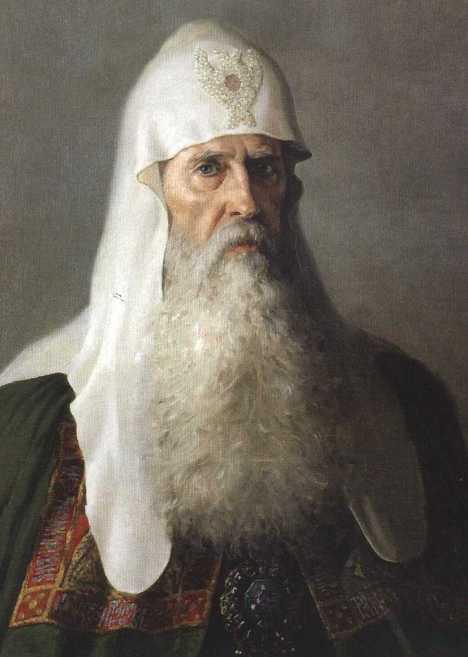
In its activities, the Patriarch Joseph (1642-1652) paid much attention to the cause of spiritual enlightenment. With his blessing in 1648 in Moscow, it was founded a religious school at St. Andrew monastery - "Rtishchevskaya brotherhood." It is thanks to the patriarch Joseph was able to take the first steps towards the reunification of Ukraine (Little Russia) with Russia.
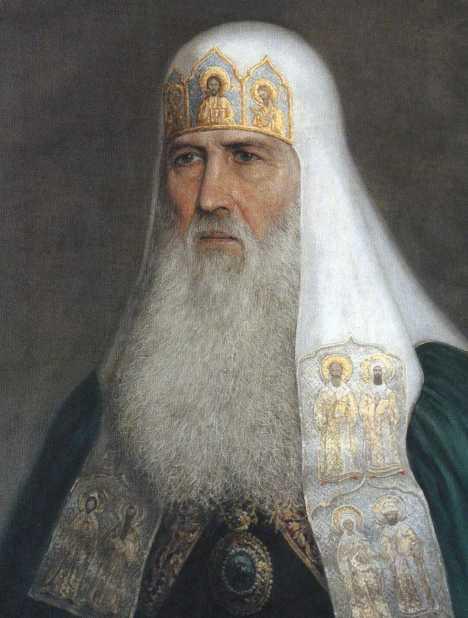
Patriarch Nikon (1652-1666) was distinguished by a deep asceticism, spirituality, and extensive knowledge was a special arrangement of Tsar Alexei Mikhailovich. With the active assistance of Patriarch Nikon in 1654 took a historic reunification of Ukraine with Russia and Belarus followed. Particularly distinguished himself Patriarch Nikon as a church reformer: when it was replaced by two fingers three fingers in the sign of the cross, fixed liturgical books on Greek models.
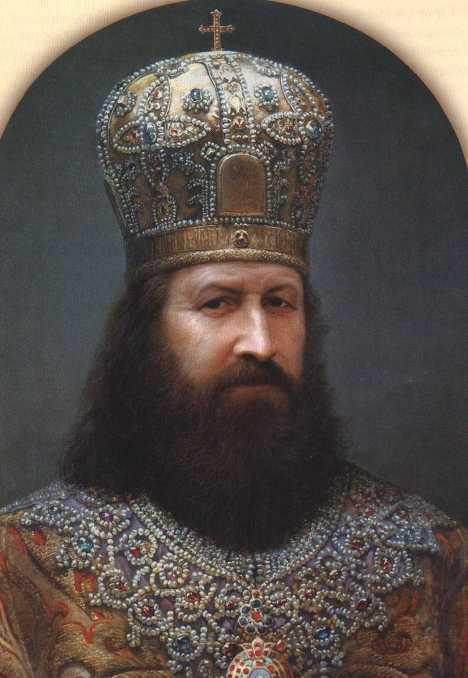
Seventh Patriarch of All Russia, was elected Archimandrite Trinity-St Joasaph (1667-1672). In its activities, the Patriarch Joasaph II sought to implement and adopt reforms of Patriarch Nikon. He continued, begun by Patriarch Nikon correction and publication of liturgical books. If it were enlightened nation in the north-eastern outskirts of Russia; on the Amur River, on the border with China, it was founded Spassky Monastery.
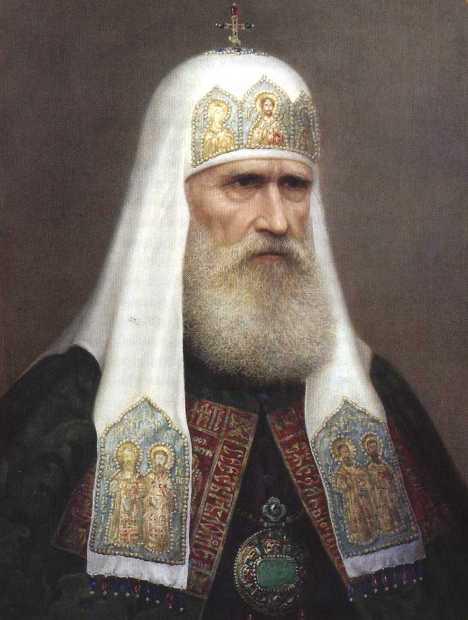
Board of Patriarch Pitirim (1672-1673) lasted only 10 months. I was approached Patriarch Nikon, and after his deposition, Pitirim was one of the contenders for the Patriarchal throne. However, he was elected only after the death of Patriarch Joasaph II. It is known that the Patriarch Pitirim baptized in 1672 in the Miracle Monastery future Russian Emperor Peter I. In 1673 with the blessing of Patriarch Pitirim was founded Tver Ostashkovsky convent.

Board Patriarch Joachim (1674-1690) had the difficult for the state and the Church years. Patriarch Joachim's efforts were focused on the struggle against foreign influence on Russian society. He proved himself Patrirah Joachim and in public administration, he acted as mediator between the warring parties during the Troubles occurred in the matter of succession to the throne in 1682 and took measures to stop the uprising musketeers.

Patriarch Adrian (1690-1700) was the 10th, the last in dosinodalny period, the Patriarch of Moscow and All Russia. Activities of Patriarch Adrian related primarily to compliance with canon law and the protection of the Church from heresy. Located to the past and are reluctant to respond to the reforms of Peter I, Patriarch Adrian still supports the important initiatives of the king - the construction of the fleet, military and socio-economic transformation.

After a 200-year period of the Synod (1721-1917) All-Russian Local Council of the Russian Orthodox Church Patriarchate restored. The patriarchal throne was elected Metropolitan Tikhon of Moscow and Kolomna (1917-1925). The new patriarch had to deal with the question of relations with the new state system, hostile to the Church in terms of revolution, civil war and general disruption.
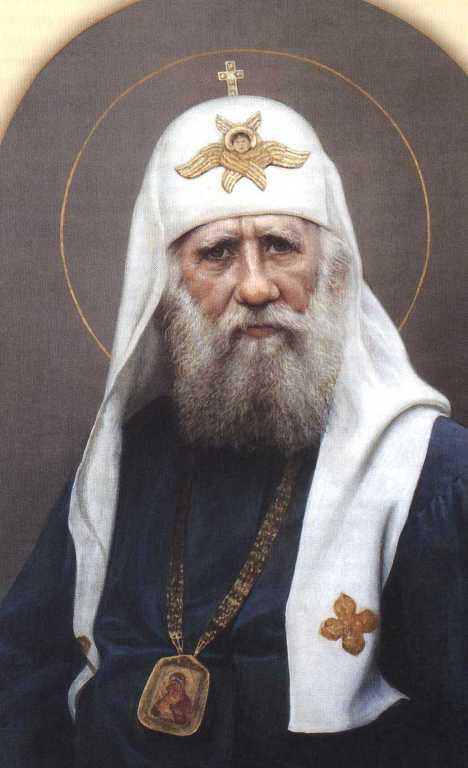
In 1925 he became Deputy Acting Patriarch Metropolitan Sergius of Nizhny Novgorod. During the Great Patriotic War was organized by Metropolitan Sergius Defense Fund, which was built thanks to a tank column of the Dmitry Donskoy, and raise funds for the construction of aircraft, for the maintenance of the wounded, orphans. In 1943, Metropolitan Sergius was unanimously elected Patriarch of Moscow and All Russia (1943-1944).
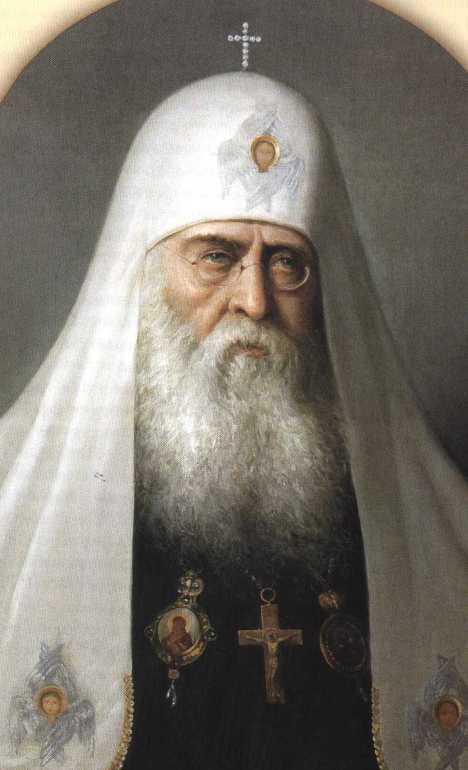
Patriarch Alexy I (1945-1970) was elected to the patriarchal throne in February 1945. He presides coincided with the end of World War II and the subsequent activity has been connected with the restoration of temples destroyed by the war, the restoration of fraternal relations with the Orthodox Churches, was the beginning of contacts with the Roman Catholic Church. Set the active connection with the Non-Chalcedonian ancient Churches of the East, as well as with the Protestant world.

In his primatial ministry Patriarch Pimen (1971-1990) was the successor of the church making Patriarch Tikhon, Sergius, Alexis I. One of the most important aspects of the activities of Patriarch Pimen was to strengthen relations between the Orthodox Churches of different countries, the development of inter-Orthodox relations. In June 1988, Patriarch Pimen led the celebrations devoted to the Millennium of the Baptism of Russia and the Local Council of the Russian Orthodox Church.
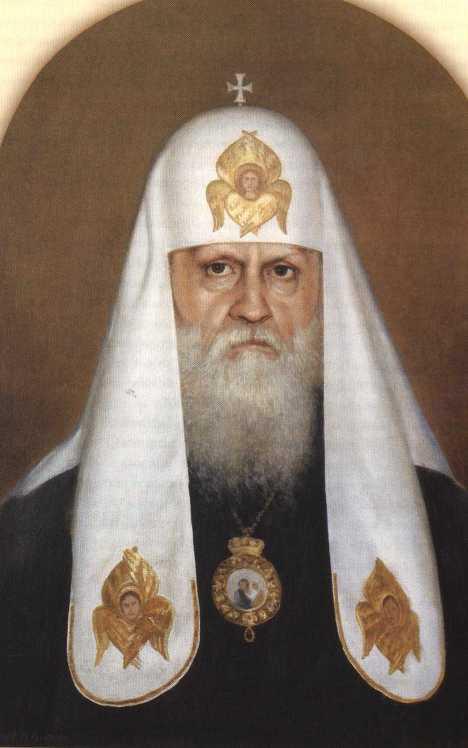
With presides Alexy II (1990-2008) linked the revival and spiritual flourishing of the Russian Orthodox Church opened up thousands of churches and monasteries, including the Cathedral of Christ the Saviour; It began active training of clergy, opened new schools. May 17, 2007 was a watershed event in the history of the Russian Church - signed the Act of Canonical Communion between the Russian Orthodox Church of the Moscow Patriarchate and the Russian Orthodox Church Zagarnitsey
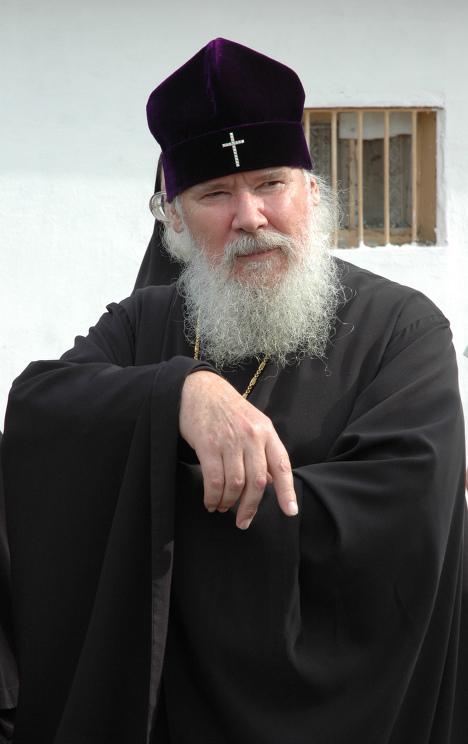
January 27, 2009 at the Local Council of the Russian Orthodox Church elected the 16th Patriarch of Moscow and All Russia. They became Metropolitan Kirill.
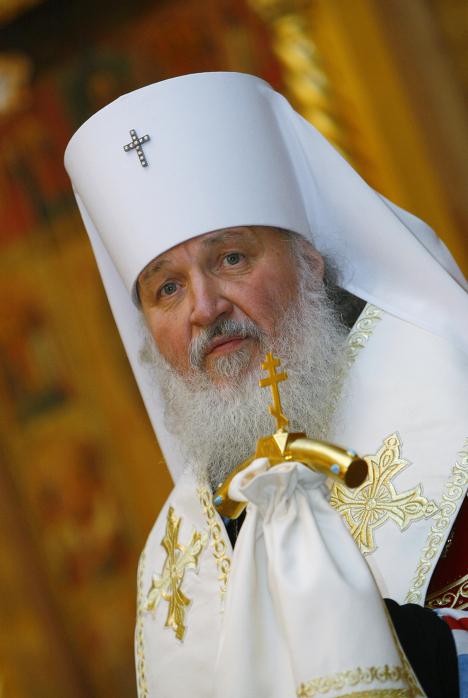
Source:

Patriarchate Holy Martyr Hermogenes (1606-1612) coincided with a difficult period in Russian history - the Time of Troubles. He openly opposed the foreign invaders, against the construction of the Russian throne Polish Prince. During the famine, which began in Moscow, Patriarch ordered to open for hungry monastic barns. At the siege of the troops of the Moscow Minin and Pozharsky St Hermogenes he was deposed and imprisoned by the Poles in the Miracle Monastery in custody, where he died of hunger and thirst.

Fyodor Nikitich Romanov, Jurassic, after the death of Tsar Fedor, was one of the legitimate contenders for the Russian throne, because he was a nephew of Ivan the Terrible. Fell into disgrace under Boris Godunov, Fedor Romney Jurassic was tonsured a monk with the name Filaret. In the Time of Troubles False Dmitry II captured the Metropolitan Filaret prisoner, where he remained until 1619. Zemsky Cathedral in 1613 elected the Russian kingdom of Michael Romanov, son Metropolitan Filaret, approving the last title of Patriarch. Patriarch Filaret (1619-1633) was the closest adviser and de facto co-ruler Tsar Mikhail.

His successor Patriarch Filaret appointed Archbishop of Pskov and Velikiye Ioasafa (1634-1640). Patriarch Joasaph made a great job of correcting the liturgical books, for the six years of his reign was released 23 books, many of which were published for the first time. During his short reign it was founded three monasteries and restored the previous five, closed earlier.

In its activities, the Patriarch Joseph (1642-1652) paid much attention to the cause of spiritual enlightenment. With his blessing in 1648 in Moscow, it was founded a religious school at St. Andrew monastery - "Rtishchevskaya brotherhood." It is thanks to the patriarch Joseph was able to take the first steps towards the reunification of Ukraine (Little Russia) with Russia.

Patriarch Nikon (1652-1666) was distinguished by a deep asceticism, spirituality, and extensive knowledge was a special arrangement of Tsar Alexei Mikhailovich. With the active assistance of Patriarch Nikon in 1654 took a historic reunification of Ukraine with Russia and Belarus followed. Particularly distinguished himself Patriarch Nikon as a church reformer: when it was replaced by two fingers three fingers in the sign of the cross, fixed liturgical books on Greek models.

Seventh Patriarch of All Russia, was elected Archimandrite Trinity-St Joasaph (1667-1672). In its activities, the Patriarch Joasaph II sought to implement and adopt reforms of Patriarch Nikon. He continued, begun by Patriarch Nikon correction and publication of liturgical books. If it were enlightened nation in the north-eastern outskirts of Russia; on the Amur River, on the border with China, it was founded Spassky Monastery.

Board of Patriarch Pitirim (1672-1673) lasted only 10 months. I was approached Patriarch Nikon, and after his deposition, Pitirim was one of the contenders for the Patriarchal throne. However, he was elected only after the death of Patriarch Joasaph II. It is known that the Patriarch Pitirim baptized in 1672 in the Miracle Monastery future Russian Emperor Peter I. In 1673 with the blessing of Patriarch Pitirim was founded Tver Ostashkovsky convent.

Board Patriarch Joachim (1674-1690) had the difficult for the state and the Church years. Patriarch Joachim's efforts were focused on the struggle against foreign influence on Russian society. He proved himself Patrirah Joachim and in public administration, he acted as mediator between the warring parties during the Troubles occurred in the matter of succession to the throne in 1682 and took measures to stop the uprising musketeers.

Patriarch Adrian (1690-1700) was the 10th, the last in dosinodalny period, the Patriarch of Moscow and All Russia. Activities of Patriarch Adrian related primarily to compliance with canon law and the protection of the Church from heresy. Located to the past and are reluctant to respond to the reforms of Peter I, Patriarch Adrian still supports the important initiatives of the king - the construction of the fleet, military and socio-economic transformation.

After a 200-year period of the Synod (1721-1917) All-Russian Local Council of the Russian Orthodox Church Patriarchate restored. The patriarchal throne was elected Metropolitan Tikhon of Moscow and Kolomna (1917-1925). The new patriarch had to deal with the question of relations with the new state system, hostile to the Church in terms of revolution, civil war and general disruption.

In 1925 he became Deputy Acting Patriarch Metropolitan Sergius of Nizhny Novgorod. During the Great Patriotic War was organized by Metropolitan Sergius Defense Fund, which was built thanks to a tank column of the Dmitry Donskoy, and raise funds for the construction of aircraft, for the maintenance of the wounded, orphans. In 1943, Metropolitan Sergius was unanimously elected Patriarch of Moscow and All Russia (1943-1944).

Patriarch Alexy I (1945-1970) was elected to the patriarchal throne in February 1945. He presides coincided with the end of World War II and the subsequent activity has been connected with the restoration of temples destroyed by the war, the restoration of fraternal relations with the Orthodox Churches, was the beginning of contacts with the Roman Catholic Church. Set the active connection with the Non-Chalcedonian ancient Churches of the East, as well as with the Protestant world.

In his primatial ministry Patriarch Pimen (1971-1990) was the successor of the church making Patriarch Tikhon, Sergius, Alexis I. One of the most important aspects of the activities of Patriarch Pimen was to strengthen relations between the Orthodox Churches of different countries, the development of inter-Orthodox relations. In June 1988, Patriarch Pimen led the celebrations devoted to the Millennium of the Baptism of Russia and the Local Council of the Russian Orthodox Church.

With presides Alexy II (1990-2008) linked the revival and spiritual flourishing of the Russian Orthodox Church opened up thousands of churches and monasteries, including the Cathedral of Christ the Saviour; It began active training of clergy, opened new schools. May 17, 2007 was a watershed event in the history of the Russian Church - signed the Act of Canonical Communion between the Russian Orthodox Church of the Moscow Patriarchate and the Russian Orthodox Church Zagarnitsey

January 27, 2009 at the Local Council of the Russian Orthodox Church elected the 16th Patriarch of Moscow and All Russia. They became Metropolitan Kirill.

Source:
Tags
See also
Kremlin. How it all began
Arrivals patriarch (65 photos)
Will Patriarch
Tema zhzhabit Patriarch (Pririsuy patriarch mustache)
Patriarch Kirill do not like the tagline Pepsi:
A day in the life of the Moscow hipster (64 photos)
Summer in Siberia
Security officials first
International Funeral Exhibition "Necropolis 2008"
The protection of top officials (52 photos)

















